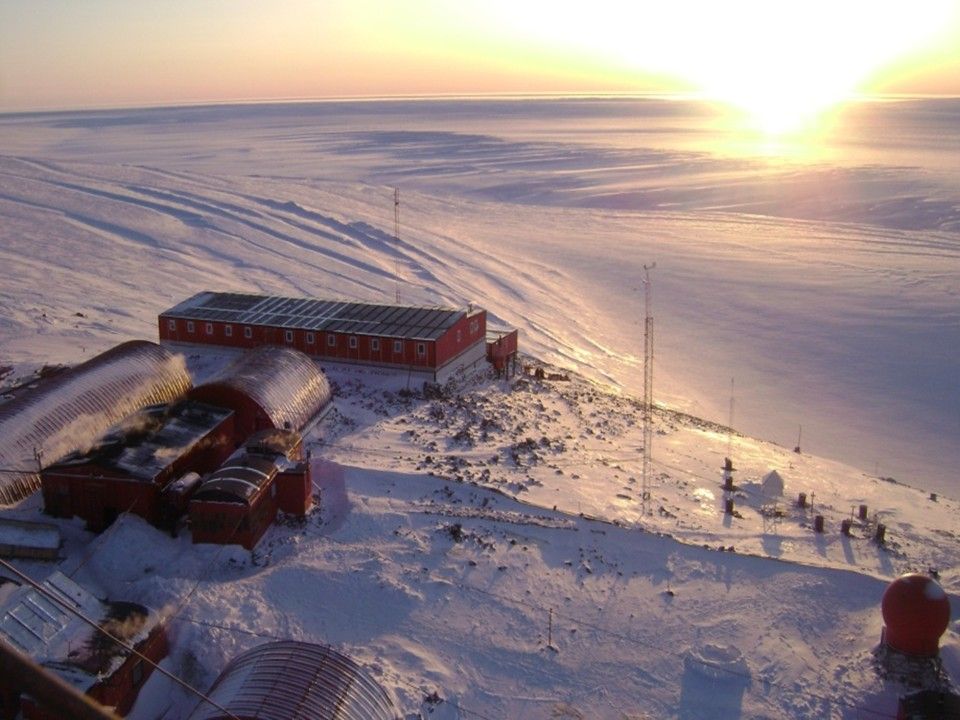ROSS SEA
Type of resources
Topics
INSPIRE themes
Keywords
Contact for the resource
Provided by
Years
Formats
Representation types
Update frequencies
status
Scale
-

CTD Casts in the Ross Sea 1996 Station AN96001 - AN96002 - AN96004 - AN96005 - AN96007 - AN96008 - AN96009 - AN96010 - AN96012 - AN96013 - AN96015 - AN96016 - AN96017 - AN96018 - AN96019 - AN96020 - AN96021 - AN96022 - AN96023 - AN96024 - AN96025 - AN96026 - AN96027 - AN96028 - AN96029 - AN96030 - AN96031 - AN96032 - AN96033 - AN96034 - AN96035 - AN96036 - AN96037 - AN96038
-
This dataset contains a selection of bias-corrected data from the preoperational MiKlip system for decadal climate predictions (Mueller et al., 2018) used within the project PNRA18_00199-IPSODES. The adopted method for bias correction is described in the file bias_correction.pdf attached to the dataset. Also data from the assimilation run are provided. Nomenclature of variables follows that of the original MiKlip output. Mueller, W., et al. A Higher‐resolution Version of the Max Planck Institute Earth System Model (MPI‐ESM1.2‐HR). J. Adv. Model. Earth Syst. 10, 1383-1413 (2018)
-

ORA di BAIA TERRA NOVA ctd dicembre 1994 - CTD casts in the Ross Sea Station AN94043 - AN94045 - AN94046 - AN94047 - AN94048 - AN94049 - AN94050 - AN94051 - AN94052 - AN94053 - AN94054 - AN94055 - AN94056 - AN94057 - AN94058 - AN94059 - AN94060 - AN94061 - AN94062 - AN94063 - AN94064 - AN94065 - AN94066 - AN94067 - AN94068 - AN94069 - AN94070 - AN94071 - AN94072 - AN94073 - AN94074 - AN94075 - AN94076
-

The main goal of our proposal is to characterize the surface radiative budget as well as cloudiness which features at the Argentine Bases Marambio and Belgrano II during the YOPP-SH Special Observing Period (SOP) as well as the YOPP Consolidation Phase. Specific objectives to secure our main goal during the SOP will be: 1 - develop a compact Radiation Measurement UNIT (RMU) robust enough to allow continuous measurements in harsh environment through which to make shortwave, longwave observations as well as to record status of the sky. 2 - secure UV measurements at both stations. 3 - develop specific tools to analyse on a daily basis (weakly for clouds) collected data and extract parameters of interest. For radiation these will include QA/QC SW and LW downwelling and upwelling fluxes, diffuse and direct components of solar radiation, UV spectral flux and doses. For clouds these will include, on a continuous base, cloud fraction derived both from radiometric measurement and sky camera observations, cloud type and cloud effect on SW radiation. In addition cloud base (or cloud ceiling) will be obtained by routine observations performed at the two stations. From UV measurements columnar ozone content will be also derived. Moving forward to YOPP consolidation phase, we plan to: 1 - extend dataset and its analysis, start to collect information on seasonal and inter-annual variability, determine Cloud radiative Forcing (CRF) 2 - perform extensive comparison between automatic and visual cloudiness observation methods. They being very useful to better understand quality and value of historical datasets at the two stationsù 3 - make comparison with cloudiness regime of Ross Sea and Antarctic Plateau. Make similar comparison for UV fluxes in the Peninsula and at Concordia.